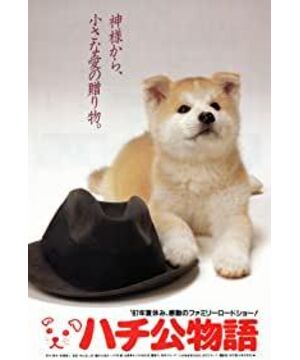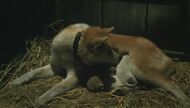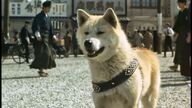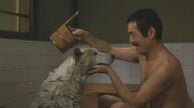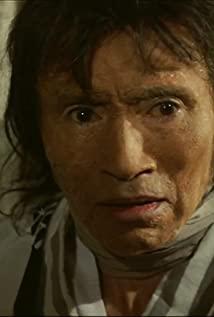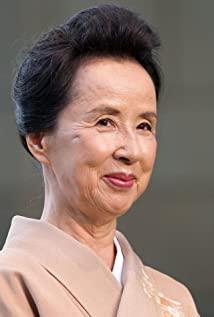In order to make the old Hachiko look more old-fashioned, in addition to using makeup to change his coat color, extra tiny weights are used to make his ears and tail droop. The film was adapted from a true story that happened in Japan in 1924. It was put on the screen in 1987, starring Tatsuya Nakadai, and named "The Story of the Loyal Dog Hachiko", which was a great success. In April 1934, a bronze statue of Hachiko was erected in front of Shibuya Station in Tokyo. Hachiko "This Dog" also attended the unveiling ceremony of the bronze statue. Since then, the station entrance near the statue has been called the "Hachiko entrance". During World War II, due to the shortage of metal resources, Hachiko's bronze statue was melted down. The bronze statue now built on the original site was rebuilt in August 1948. In March 1935, Hachiko died of heart filariasis at the age of 11. After its death, the body was made into a specimen and kept in the National Science Museum. Update: The real Hachiko died in March 1934, according to the ending card for the movie The Tale of Hachiko. The early film Hachiko Monogatari and other sources state that it died in March 1935 (nine years and nine months after Professor Ueno's death). There is also a bronze statue in front of the station in Odate City, where he was born. In addition, in front of Fuji TV, there is a new statue of Hachiko, a loyal dog with a height of 88.8 cm and a weight of 88.8 kg. The real Hachi was born in Odate, Japan in 1923. His master was Eisaburo Ueno, a professor at Tokyo Imperial University. After his death in May 1925, Hachi returned to Shibuya Station and waited there for nine years.
View more about Hachi-ko reviews


